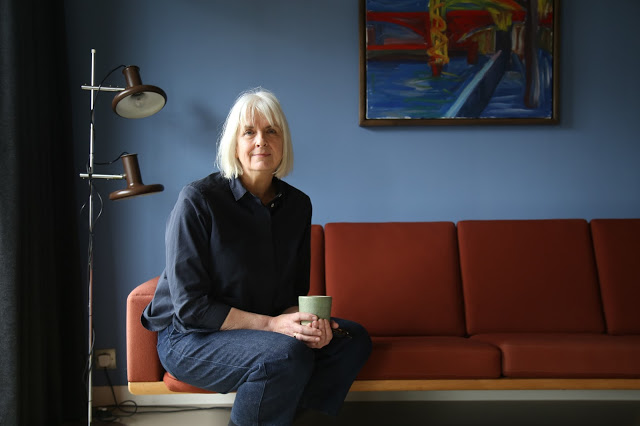
I went to one of my least favourite places, the Barbican, to the London flat of Jessica Seaton, co-founder of Toast and now cookbook author. Her book Gather, Cook, Feast is shortlisted for this year’s Andre Simon food and drink book awards.
I was surprised that Jessica lived in the Barbican, a brutalist concrete jungle built in the 1970s. Her flat is all subdued muddy jewel painted walls and vintage 70s furniture. Her kitchen is the original stainless steel, almost submarine futuristic style of the original building, one of the few left.
After talking, I got to see it through her eyes and started to appreciate the craftsmanship that went into this modernist tangle of concrete in the centre of London.
Jessica also spends time in rustic Wales where she and her husband Jamie moved after university to set up one of the UK’s most successful mail order fashion and lifestyle brands. I do love a Toast catalogue, all muted shades and skinny girls wearing large sloppy jumpers.
The homeware features gorgeous chalky plates, hand-thrown pottery, mango wood chopping boards, linen napkins. The clothes are of very good quality: retro naval style jackets, double cotton pyjamas, durable striped T-shirts. Jamie does the design and Jessica oversees the photography shoots.
Gather, Cook, Feast
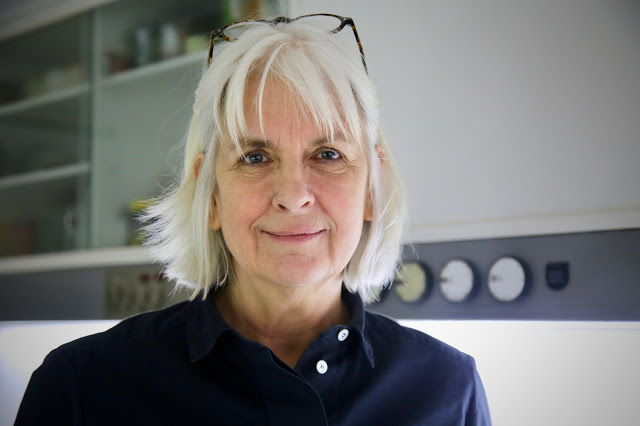
You must be very pleased with the book
I am yes. It’s been an amazing journey. It’s opened up so many more wonderful things. I feel very grateful.
The book has very intriguing recipes. I see you worked with Anna Colquhoun, she’s very talented. I imagine she was a good person to work with.
My agent knew I’d need somebody to tag team with. We cook in a similar way. I couldn’t have done it on my own, the year that I did most of the work for the book was also the biggest busiest year for Toast.
Why was that?
We moved the business to London although we’ve still got an office in Swansea. We were just busy doing a deep dive. I chose the worst year to do it. It took four years altogether to do it.
I imagine this is 30 years worth of cooking.
Certainly some things I’ve been cooking for a long time.
Have you always cooked from a young age?
Yes, I think I was 4 the first year I cooked. My mum bought me a toy cooker for Christmas with little pellets of paraffin with a frying pan you put on. I cooked Christmas morning bacon and egg on this little cooker.
They would never allow that now.
No (laughs).
I’ve always cooked. I’m a home cook. So that’s why it was great to work with Anna.
You don’t realise how intense it is until you try and describe it to people. You don’t know how much instinctive drive goes into it.
We developed the list of recipes between us, but it’s my concept. Then we sat down, big sheet of paper. A lot of ideas and ingredients, to and fro, what about this, what about that. It’s just a collaboration all the way through. I also spent a lot of time cooking with her.
Anna made me more rigorous. Not just in terms of the recipes but also the thinking. She’s an anthropologist. That was great to have somebody there, challenging.
Were you frightened of becoming a writer?
It was hard but I absolutely love it.
Did you always write?
When I was young I did scribble away. Not really through my working life.
When did you start to write?
When I started the book!
What was your favourite part of the process?
You know…it’s actually quite a grim process. Bringing it all together with the photography was wonderful.
You were there on the shoots? Art directing?
Yes but I was terrified. Because one feels very exposed stepping into a world that’s not your world. Juliet, who is the most wonderful editor, was very breezy, saying ‘Oh you can do props, you can do this and that’. I did all the styling. Sophie Missing did the cooking. I couldn’t have done the photographs and cooked, I’m quite slow in the kitchen. Nowadays. It takes me time to get things right.
I like that idea of being slow in the kitchen.
I was terrified. The day before I phoned up my daughter ‘oh it’s going to be a disaster’. But when I arrived, I thought: ‘Oh I know how to do this actually, it’s not much different from what I do at work.’ I’d never shot food before, there are different things but it didn’t take me long. But -the endless pressure of the entrepreneur- I just wanted to be better.
I feel that about every book. That’s normal.
Jonathan Lovekin, a lovely man, did the food photographs. My son Nick Seaton did the landscapes. He does fashion and reportage. He also photographed Rachel Roddy’s books.
The recipes
Going through the recipes in the book, I like this blackcurrant leaf cooked cream.
The flavour is unbelievable. Have you got blackcurrants in your garden?
They aren’t the same as blackberries?
Blackcurrants are small, round and black. They have a huge punch of Vitamin C, it’s Ribena. You have to use them early, in Spring. If you leave it too late they get leathery. You need the juvenile leaves.
There is quite a bit of Scandinavian influence in here, have you spent time there?
I have. I’m sure we are all just a mix of all our influences.
I love the idea of this gilded gingerbread recipe.
Obviously gilding with gold leaf happens in cooking. It’s used in Indian sweets especially. Our daughter was getting married and they didn’t want the old fruit cake.
They’ve fallen out of favour nowadays, I interviewed a wedding cake maker.
I don’t understand it honestly because I think they are delicious. It was how can we create drama, something spectacular and the spectacular thing was an enormous Gorwydd tiered cheese tower and gilded gingerbread.
Gold is an anti-depressant.
(Laughs) It wasn’t difficult to gild gingerbread. It’s really not.
In homeopathy they give you gold as an anti-depressant. It’s like being high.
Amazing, lets get some gold!
I love this chocolate liquorice pot in your book.
Since we did this I really want to do more things with liquorice. There is a tradition of liquorice in this country, in Pontefract. It was grown up north, it was a real big deal but it’s not in our vocabulary too much.
And we only have sweet liquorice here.
There is so much potential.
It’s supposed to be bad for your blood pressure.
Isn’t everything? Isn’t life bad for your blood pressure? I think you have to eat a healthy diet but not get obsessed, otherwise you get pulled around from pillar to post. I mean coffee was bad but now it’s good.
On the Barbican
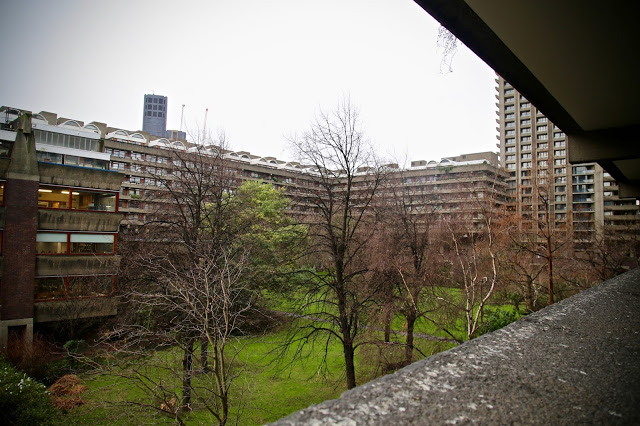
This is your pied à Terre. How long have you lived in the Barbican?
Since 2011.
So quite recently. How do you find living in the Barbican?
We love it.
Do you know other people here?
We know some, we don’t go to staircase parties here. We don’t know everybody on our staircase.
It’s sort of the absolute opposite of your aesthetic.
I don’t think it is.
Tell me what you like about the Barbican architecture. It is quite controversial, brutalist, minimalist.
Is it? The Barbican has a huge fan club. We love this architecture. It’s different. It is very quiet. You come in there is the sense of the natural world here. You hear the ducks on the pond, the blackbirds, there is a nesting falcon in the tower. It is calm. A sense of sky, the traffic is faint. It’s got a seclusion.
Show me the kitchen here.
This is the classic Barbican kitchen. These were actually made by ship builders. You can see -‘Kitchen by Brooke Marine Limited’. This is one of the reasons we picked this flat. I like the authenticity of it. The design is just incredible.
All those brass handrails in the Barbican centre are beautiful. This building, all these columns, all the concrete, they cast the concrete, and they got hammers to distress it by hand. It took ten years. It’s all hand-finished.
The references in the architecture. The brick at the lower level, references the clay and the mud that London sits on. The way the water integrates, it’s modelled on Venice. The volume, the half-light inside. Really nice spaces to live in. It’s just really good design and that’s important to us.
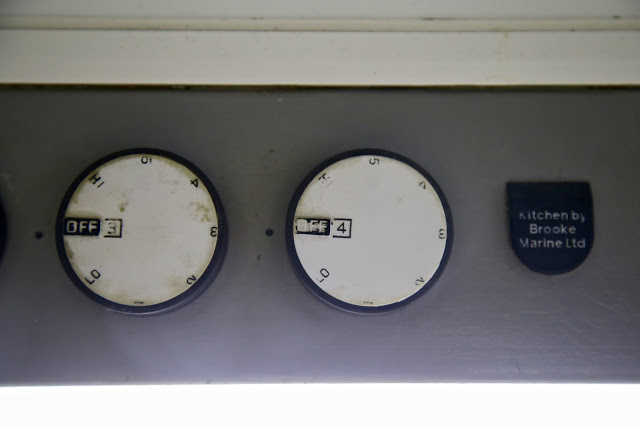
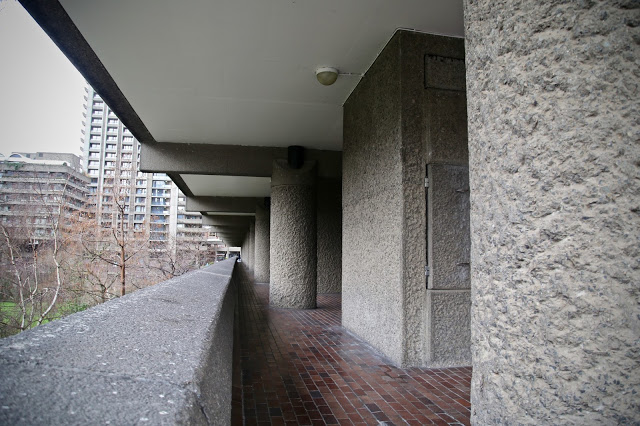
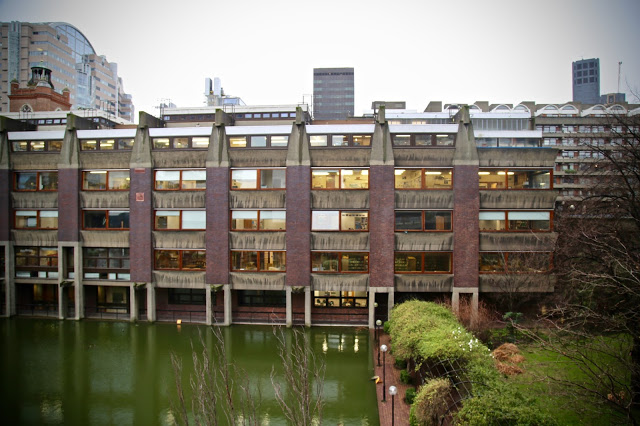
On Wales versus the city.
Do you cook different things here than you do in Wales?
A bit.
I probably tend to do things that are more involved processes in Wales, like sourdough every week. Even just making sourdough is actually quite a challenge here. In Wales you use the local water, but use the tap water here, you’ll kill it. You have to think about those things.
I use bottled water which is a bore actually. Those micro-organisms in the Mother don’t thrive in the fluoride and the chemical treatments they put in the water. Obviously with all these people, it’s got to be done. I’m not precious about drinking it but it’s no good for sourdough.
I made marmalade the other week, I wouldn’t make that here. I’ve got a garden at home.
You’ve just got a balcony here?
Just some grasses. They look quite dead, but they will come back.
What is your favourite season?
Oooh I love them all. I love the way the wheel turns. At the moment we have these amazing greens like cime de rapa and puntarelle, radicchio and the blood oranges. It’s so exciting to have those and then they go away and something else comes along.
So there’s no favourite season. I don’t like the homogenisation that’s happened, and that’s driven by business. Like strawberries. They are the most popular fruit in fruit and veg in supermarkets. So we have strawberries all year round but what sacrifice! They don’t taste of anything. I stand against those things.
Are you Welsh?
My father is Welsh. I was born in Leicestershire. We moved to Wales as soon as we graduated.
Did you make a decision to go and live somewhere quite rural?
Yes. I grew up in the countryside. Jamie came from Liverpool. But he still feels connection to wild places.
You didn’t feel lonely there?
No. Never.
I think you can feel more lonely in the city, honestly. We spent three weeks there at Christmas which was really nice. The human contact is more generous. Of course you have friends, nice people, in the city too. The majority of the contact you have in London is no contact at all. And it just gets to a more human level. We were searching for a hubcap my son had lost in a country lane. This guy stopped and said I’ve got a metal detector, I’ll help. He just pitched in and tried to help us. People have time.
In the countryside you have to reach out for contact. In London we are protecting ourselves from contact.
Isn’t it a shame?
It is.
About Toast.
Tell me about Toast, the background.
Toast was our second business. We started Toast about 20 years ago because we were bored and we needed a new challenge.
What was your first business?
Jamie designed and we made intricate pieces of knitwear, heavily patterned.
So everything about Toast was hopefully the opposite of that. We started at home and really grew. We just wanted it to be simpler.
I really love the homeware; chalky pinks and yellows, very flat pottery plates I bought last year. Where do you get it made?
As a general rule, we make in the best place that we can for the item that we are making. It depends where the specialism is. It depends, we try to hit the right price.
It is quite expensive.
It depends what you are comparing us to really. For most people it probably is. But the fabrics that we use are used by labels like Céline. I think you are getting very good value for the price. We try to give better value and that’s why we sell direct.
Your Toast catalogues has a certain style. A certain colour palette, a certain approach. Is that what you are trying to do with your food book?
There are bound to be similarities in that I’m part of Toast. This is also me. The same principals drive through both.
You have lots of natural colours, the sense of place in a plate, a connection to nature. There are organic shapes, colours, in the choice of clothes, homeware and in the recipes in your book.
We live in the world you know. So I think both Jamie and I see ourselves as being part of the world, that includes every manifestation, good and bad. I don’t see it as, I guess from the outside, you might think it’s just to do with nature. It’s about connection and loving, the way we have this joyousness to be part of.
The archeology of food
I noticed you use Carlin Peas. We don’t have a big bean culture in this country.
Except we did. It’s just disappeared in our culture.
I noticed in quite a few of your forewords, you are interested in history, early British history…
I was an archeologist. That’s what we trained in.
So this is the archeology of food?
Is it? I think it’s just the whole picture I’m interested in.
Not much changes. Much less changes than we think. Between us and Neolithic man-not so different. I did a blog for Stonehenge.
They had an exhibition, really interesting, on foods that were eaten at Stonehenge because it was a feasting and ritualistic site. So people didn’t live there but they came there and feasted- elaborately and magnificently-throwing away bones that still had meat on. It was real largesse, real display. Not so different, these people from us. They had cheese, they had paleo bars, like pastes made from berries and nuts and fat. Just like a paleo bar now.
Early breakfast bars…
It’s just interesting to see what’s the same.
Did they have beans?
No evidence of beans. Not on that site. Because they weren’t actually growing crops there.
Were they hunter gatherers?
No this is Neolithic times, they were farmers with domesticated animals. In other sites where they were living full time, there is evidence of grains, growing wheat, that was ground because they had querns for grinding wheat, they were making flat breads.
None of those grains are present at Stonehenge because the feasting food was animals, vast quantities of pigs and cows.
There is a guy, John Letts, making flour out of heritage grains, they’ve got one called Peasant Blend. The wheat is mixed with ground peas and beans. This was something the peasants would harvest, give it to the lord and he would give them flour back, mixed with peas and beans. There is a taint of it being associated with poverty. But we use split peas, mushy peas.
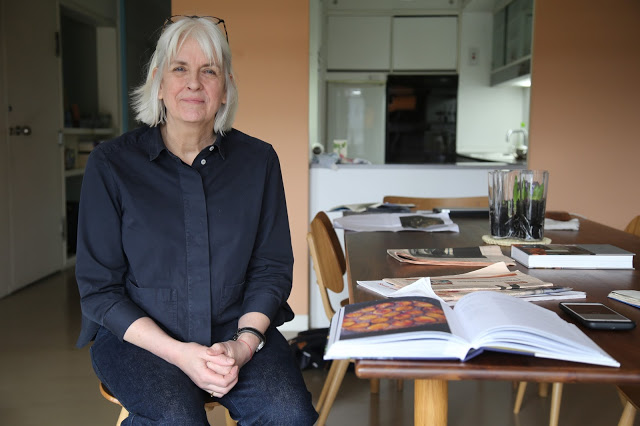
You’ve got quite a lot of followers on Instagram. When did you start your Instagram?
I can’t remember. I don’t put heaps into it.
You write quite poetically in your Instagram captions.
I love the idea of trying to capture the intangible. Whether that’s through writing a book, or the food. It’s only an attempt. You don’t really get to capture it.
Buy Gather, Cook, Feast by Jessica Seaton and Anna Colquhoun.
To win all six food books on the Andre Simon Awards shortlist, please read all the interviews:
- Interview with Jessica Seaton, author of Gather, Cook, Feast.
- Interview with Thad Vogler, author of By the Smoke and the Smell
- Interview with Michael Booth, author of The Meaning of Rice.
- Interview with Victoria Moore, author of The WineDine Dictionary.
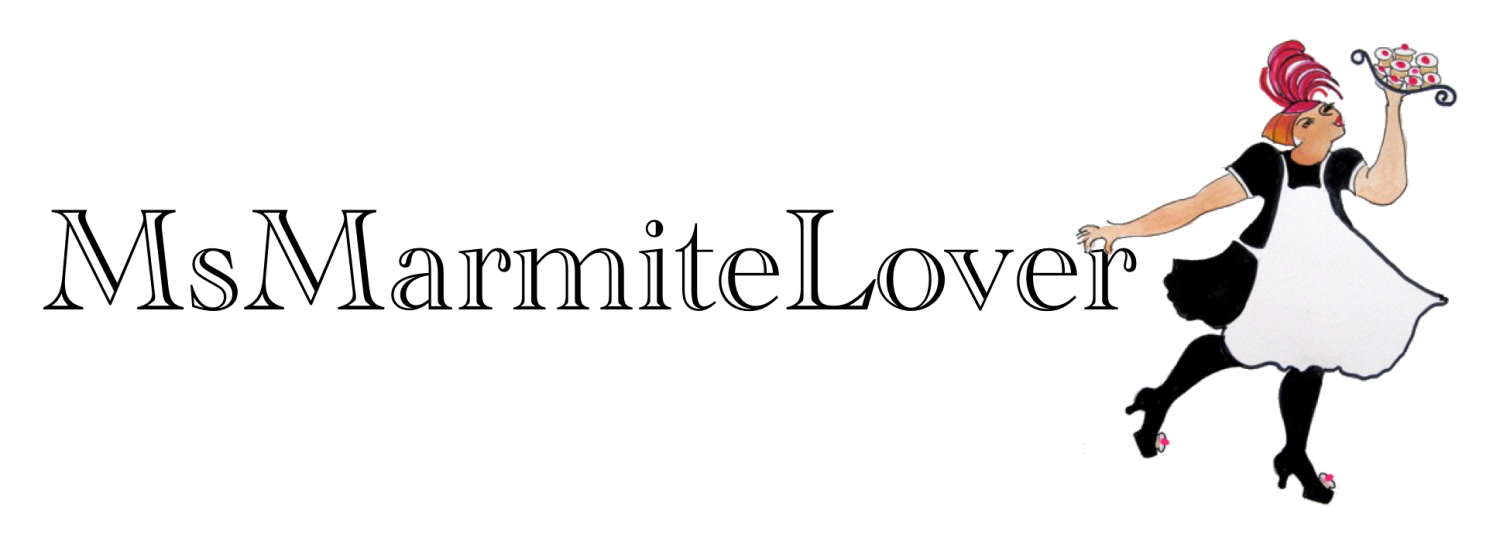



Interesting, i always enjoy looking at their website even if they'll never make anything in my size
Too small? I find their sizing ok and I'm big.